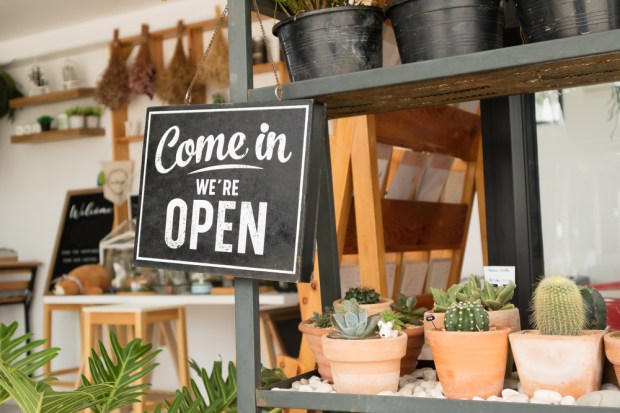Spendindie Plans To Be ‘Amazon’ For Mom-And-Pop Shops

The majority of American consumers report they want to shop local and boost businesses they feel strongly about in their home community. But the reality, according to Spendindie Founder and CEO Thad Beversdorf, is that wanting it and doing it are very different things.
Beversdorf noted in an interview with Uproxx at SXSW earlier this year, “The biggest barrier for consumers to do that, even consumers who really want to do that, is it’s not convenient. It’s a fragmented experience. Online, you go to 15 different websites, but that means you got to check out 15 times, so you’ve got to enter your information for shipping 15 different times. It’s inconvenient at the brick-and-mortar level, and it’s very inconvenient still at the eCommerce level.”
Shopping local is a nice idea, he notes, but when push comes to spend, most consumers don’t have time to do it — and don’t have any incentive to take the time. That means local business mom-and-pop shops — seemingly destined to be constantly on the short end of the revenue stick — don’t have marketing budgets measured in the billions.
Now, mom-and-pop have options — the craftspeople and artisans making the best paper-clip sculptures in the world can go to Etsy; and there is of course the massive Amazon marketplace. But Etsy is for a very certain niche and, though Beversdorf liked much of the Amazon model, small shops have a tendency to get easily lost is the massive wave of merchants shuffling for consumer attention.
So Beversdorf decided to do something that some might consider a very risky retail play — he decided to create Spendindie, a retail marketplace created in Amazon’s image but tailored to bring buyers to local businesses nationwide.
“What we’re really trying to do is replicate what Amazon does, but exclusively for local and independent businesses,” Beverdorf said.
Rewarding The Customers
Social media, according Beversdorf, was the key for him to cracking how an individual shop could ever hope to compete against the advertising budgets that the big-box stores and mega marketplaces bring to the table.
“I was looking at some online social media sites and thought, ‘Wow! Here are all these people discovering cool products and posting them to this site. By posting product pictures, people are generating huge value creation for the site but are not getting paid for any of that value creation. Why? Why shouldn’t I pay someone for creating monetary value?'” Beversdorf told FierceRetail.
And so that is part of what the Spendindie marketplace does. Shoppers, after they’ve selected an item from a local business and bought it, will be encouraged to upload a photo of the item and their comments on the buy. Things that get a lot of likes and interaction will move to the marketplace and be heavily promoted.
Then, in a twist on affiliate marketing, from then on when the item sells, the customer who promoted it and brought it to the world’s attention will get a small piece of the sale.
“It’s a new economic ecosystem. People can supplement their income by helping us build out a marketplace that, in the end, exists to serve their own economic well-being. It makes perfect sense. And who better than everyday people to discover the coolest products from every nook and cranny across America’s main streets?” he said.
Plus, he notes, it is a reasonable way to help nurture influencers and content creators — and create not just a loyal crew of shoppers, but a loyal crew of shoppers who are likely to bring business back with them.
“We’re asking people to create value to us and, when they do, we want to give some of that back,” he said. “We believe this is really going to shake things up,” he told AutinInfo.
Risk-Free For Merchants
Attracting consumers with a way to create value for themselves — by creating value for the platform in merchants — is, however, only part of the battle. As a two-sided platform, Spendindie also needs merchants.
Today there are less than 100 merchants on the platform, though Spendindie hasn’t started marketing itself yet in earnest. The goal for creating more — and eventually offering a truly rich coast-to-coast mainstreet experience that the site is going for — is, according to Beversdorf, creating an experience for these local merchants that is essentially “risk-free.”
That means the site goes very lite on the fees so that the barriers for entry are essentially non-existent. There’s no listing or subscription fee, no minimum number of orders required, and sellers can leave the marketplace at any time without penalty.
Spendindie takes it cuts when goods are sold — that is it. Other fees are avoided because making merchants pay to sit there, he noted, isn’t really offering a value. What does offer value — and what the site does cover, also for free — is the fulfillment-logistics side of the business. That, according to Beversdorf, is the most challenging part of the business, but one they are looking to meet with its just built-out fulfillment center.
“This creates a lot of reliability and takes the burden off of our business owners so they can focus on their business rather than logistics and technology,” he said.
The goal, he added, is to build a merchant-based platform that is truly merchant-focused — and to make sure that no matter how local, the mainstreet merchants of America can grab up foot traffic that is national, and maybe even global someday.
